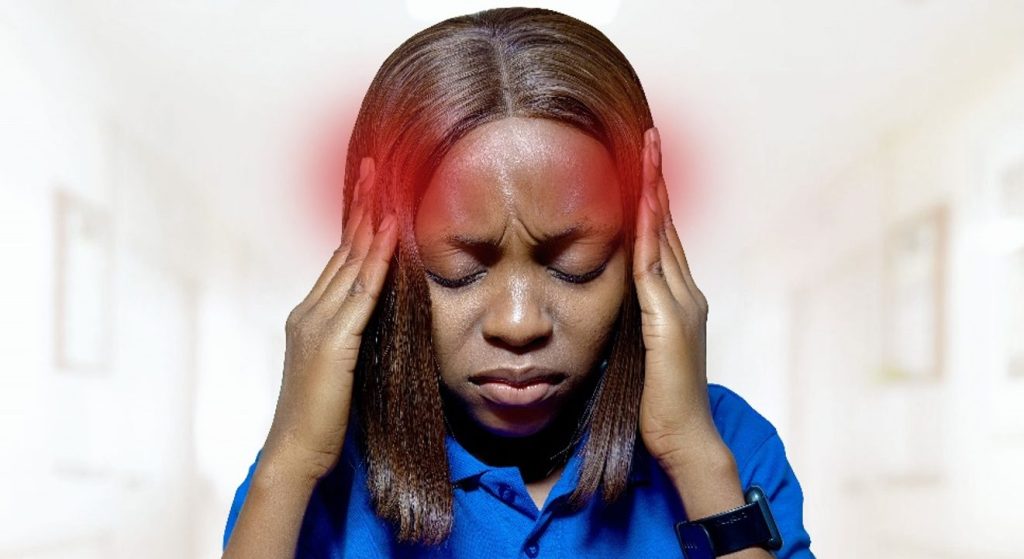Headaches are a common health issue experienced by nearly everyone. They can range from mild discomfort to severe pain and can be classified into various types, each with its unique characteristics. In this newsletter, we will discuss the types of headaches, the signs to watch out for, and when to see a doctor.

TYPES OF HEADACHES
Headaches are classified into primary and secondary headaches. With the primary type, the headache is the main issue and it has no specific cause. A secondary headache is triggered by pain or inflammation due to an underlying condition.
Primary Headaches
Common primary headaches include tension headaches, migraines, and cluster headaches.
- Tension-type headache (TTH): This is the most common type, often described as a constant band-like pain around the head. The pain might vary from minor to severe. The most common causes are stress, fatigue, shoulder or neck muscle pain, and jaw pain. This type affects three out of every four adults, with some experiencing it thrice each week. It usually lasts between 20 minutes and two hours.
- Migraine: According to WHO, migraine affects 1 in 7 people worldwide. It is up to 3 times more prevalent in women than men. Migraine causes throbbing pain that can be felt mostly on one side, it can last from less than an hour to several days and can be triggered by a variety of factors such as hormones, weather changes, a lack of sleep or oversleeping, or stress, sensory triggers: bright lights, loud noises, strong smell, etc. Migraine pain is more severe and disabling than tension types, it significantly impacts daily life.
- Cluster Headaches: Cluster headaches are extremely severe headaches. It rarely occurs, it usually begins in the area around one eye and extends to other areas of the face. Each headache lasts from half an hour to three hours. Episodes can occur multiple times in 24 hours (in clusters). This happens daily and might extend for several weeks or months. Most cluster headaches happen at night. It affects men far more than women.
Other forms of headaches fall in the category of secondary headaches;
Secondary headaches are the result of another medical condition that causes pain-sensitive nerve endings to be squeezed on, tugged, or pushed out of place. Here are some of the more serious causes of secondary headache:
- Sinus Headache: Sinus headaches are frequently associated with sinus congestion and inflammation. The sinuses are air-filled cavities located within the bones of the face and skull. They produce mucus to assist in moisturizing and filter the air we breathe. When the sinuses become inflamed or congested, it can cause pressure or pain, often known as a sinus headache. The pain is felt around the forehead, nose, and cheekbones. If you lean forward, the pain may get worse. It goes away when the infection clears.
- Medication Overuse Headaches (MOH): Medication Overuse Headache (MOH), also known as rebound headache, is a form of headache caused by excessive use or reliance on pain-relieving drugs to manage headaches. Paradoxically, when drugs intended to provide relief are misused, they might lead to more frequent and severe headaches. MOH generally arises when pain drugs are administered regularly and persistently over a long period.
- Thunderclap Headaches: This an uncommon type of primary headache, it is characterized by a sudden-onset headache that reaches its maximum intensity within a very short period—often in seconds to a minute. These headaches are called “thunderclaps” due to their sudden and intense nature, likened to the quick and powerful sound of thunder. It often heralds the sign of a serious medical problem and it requires immediate action
- Hypertension-Related Headaches: Hypertension-related headaches are linked to high blood pressure (hypertension). It’s important to note that headaches are not always indicative of hypertension; some individuals with hypertension may not experience them
- Brain Tumor-Related Headaches: These are headaches as a result of raised intracranial pressure in the brain. The pressure in the brain is raised because of the swelling or a tumor, they are worse when you lie down and often wake you up at night.
When to be concerned about Headaches
Not all headaches require a hospital visit. But headaches can signal a more serious disorder that requires prompt medical care. Immediately visit a nearby hospital if you or someone you’re with experience any of these symptoms:
- Sudden, severe headache that may be accompanied by a stiff neck
- Thunderclap headache
- Severe headache accompanied by fever, nausea, or vomiting that is not related to another illness
- Persistent headache particularly in someone over age 50
- “First” or “worst” headache, often accompanied by confusion, weakness, double vision, or loss of consciousness
- Headache that worsens over days or weeks or has changed in pattern or behavior
- Recurring headaches in children
- Headache following a head injury
- Headaches that wake you up at night or headaches that is worse when lying down
- Headache and a loss of sensation or weakness in any part of the body, which could be a sign of a stroke
- Headache associated with convulsions or shortness of breath
- Two or more headaches a week
- New headaches in someone with a history of cancer or HIV/AIDS
DO YOU HAVE ANY QUESTIONS?
If you have questions or concerns regarding persistent or sudden onset headaches or general medical care, please visit us at KM 17 Owerri-Port Harcourt Express Road Mgbirichi, Imo State. Our Neurology and general Clinic runs everyday and on weekends from 8:00 AM – 2:00 PM. You can schedule an appointment to speak with our Neurology specialists who specialize in the diagnosis and treatment of headaches, or request online consultation via Telemedicine at 07047000014, 07047000011, 07047000013.
…exceptional people providing exceptional healthcare.

